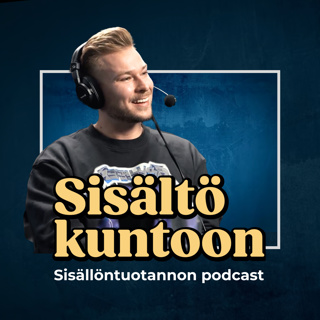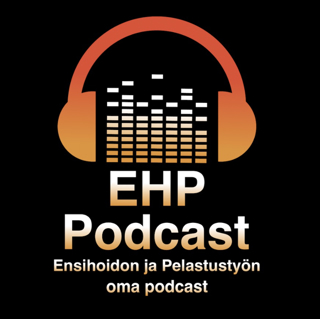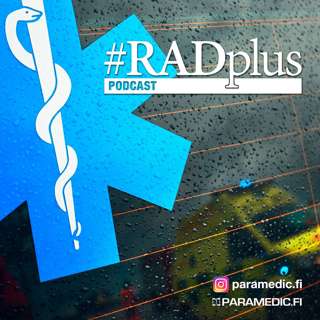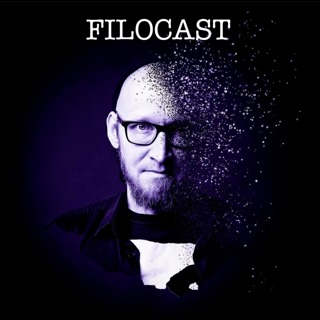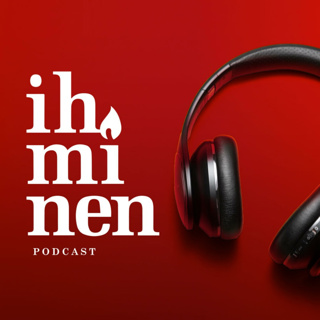
Ep. 410 True Lumen Re-Entry with Pioneer Plus with Dr. Thomas Davis
In this episode of BackTable Podcast, host Dr. Ally Behati invites interventional cardiologist Dr. Thomas Davis, Director of the Cardiac Catheterization Lab at St. John Hospital and Medical Center, to discuss re-entry devices, with a focus on the Pioneer Plus Catheter. Dr. Davis shares his experience in using the Pioneer Plus, an intravascular ultrasound (IVUS) guided re-entry catheter in treating critical limb ischemia (CLI), especially in cases where it is difficult to stay intraluminal. He explains a novel ‘reorientation technique’, which allows proceduralists to remain in the true lumen while treating a chronic total occlusion. Dr. Davis also describes his workflow and decision points about when to reach for the catheter. To finish the episode, he covers post-procedure patient management, imaging follow up, and opportunities to learn more about treatment of peripheral vascular disease. --- CHECK OUT OUR SPONSOR Philips Pioneer Plus https://www.usa.philips.com/healthcare/product/HCIGTDPPLUS/pioneer-plus-ivus-guided-re-entry-catheter --- SHOW NOTES 00:00 Introduction to the Back Table Podcast 02:09 Dr. Davis’ Practice in CLI Treatment 04:18 The Decision to Use the Pioneer Plus Catheter 07:31 The Reorientation Technique for Staying in the True Lumen 11:49 Using Intravascular Ultrasound to Guide Your Wire 17:33 Learning and Troubleshooting with IVUS 21:48 Preparing for Subintimal Work 28:26 Post-Procedural Management and Imaging 30:12 Advice for Proceduralists in the CLI Space --- RESOURCES Pioneer Plus Re-Entry Catheter: https://www.usa.philips.com/healthcare/product/HCIGTDPPLUS/pioneer-plus-ivus-guided-re-entry-catheter Outback Re-Entry Catheter: https://cordis.com/na/products/cross/endovascular/outback-elite-re-entry-catheter Enteer Re-Entry Catheter https://www.medtronic.com/us-en/healthcare-professionals/products/cardiovascular/chronic-total-occlusion-devices/enteer.html The Amputation Prevention Symposium (AMP) Meeting: https://www.hmpglobalevents.com/amptheclimeeting
25 Tammi 202434min

Ep. 409 Thrombectomy for Large Core Infarctions: Balancing Benefits and Risks with Dr. Fawaz Al-Mufti
In this episode of the BackTable Podcast, guest host Dr. Krishna Amuluru interviews Dr. Fawaz Al-Mufti about recent trials on large core strokes and how they may impact practice. Dr. Al-Mufti is a practicing neurointerventionalist and serves as the Associate Chair of Neurology for Research at New York Medical College. Dr. Al-Mufti examines the cost-effectiveness and socioeconomic implications of successful treatment of patients with large core strokes. The doctors highlight various stroke thrombectomy trials including the RESCUE-Japan, SELECT2 Trial, and TENSION trials. The discussion also covers how these findings affect thrombectomy expansion in lower resource settings and the future outlook of endovascular thrombectomy procedures. --- CHECK OUT OUR SPONSOR RADPAD® Radiation Protection https://www.radpad.com/ --- SHOW NOTES 00:00 - Introduction 02:53 - Large Ischemic Core Infarcts 06:06 - The Importance of ASPECTS 11:59 - Large Ischemic Core Trials 23:37 - Socioeconomic Implications of Thrombectomy 38:08 - The Future of Thrombectomy --- RESOURCES Mission Thrombectomy: https://missionthrombectomy.org/ The Alberta Stroke Program Early CT score (ASPECTS): A predictor of mortality in acute ischemic stroke: https://www.ncbi.nlm.nih.gov/pmc/articles/PMC8515558/ Endovascular thrombectomy after large-vessel ischaemic stroke: a meta-analysis of individual patient data from five randomized trials (HERMES Study): https://doi.org/10.1016/S0140-6736(16)00163-X Thrombectomy for Stroke at 6 to 16 Hours with Selection by Perfusion Imaging (DEFUSE III Trial): https://www.nejm.org/doi/full/10.1056/nejmoa1713973 Thrombectomy 6 to 24 Hours after Stroke with a Mismatch between Deficit and Infarct (DAWN Trial): https://www.nejm.org/doi/full/10.1056/nejmoa1706442 Endovascular Therapy for Acute Stroke with a Large Ischemic Region (RESCUE-Japan Trial): https://www.nejm.org/doi/full/10.1056/nejmoa2118191 Trial of Endovascular Thrombectomy for Large Ischemic Strokes (SELECT2 Trial): https://www.nejm.org/doi/full/10.1056/NEJMoa2214403 TESLA Trial: Rationale, Protocol, and Design: https://www.ahajournals.org/doi/10.1161/SVIN.122.000787 Endovascular thrombectomy for acute ischaemic stroke with established large infarct: multicentre, open-label, randomized trial (TENSION Trial): https://www.sciencedirect.com/science/article/pii/S0140673623020329 Evaluation of acute mechanical revascularization in large stroke (ASPECTS ⩽5) and large vessel occlusion within 7 h of last-seen-well: The LASTE multicenter, randomized, clinical trial protocol: https://pubmed.ncbi.nlm.nih.gov/37462028/ Trial of Endovascular Therapy for Acute Ischemic Stroke with Large Infarct (ANGEL-ASPECT Trial): https://www.nejm.org/doi/full/10.1056/NEJMoa2213379 Acute endovascular stroke therapy (Dr. Mike Chen Review): https://pubmed.ncbi.nlm.nih.gov/20535000/ Mechanical thrombectomy is cost-effective versus medical management alone around Europe in patients with low ASPECTS (European Cost Effectiveness Study): https://www.ncbi.nlm.nih.gov/pmc/articles/PMC10313965/ Mechanical Thrombectomy Global Access For Stroke (MT-GLASS): A Mission Thrombectomy (MT-2020 Plus) Study: https://www.ncbi.nlm.nih.gov/pmc/articles/PMC10313965/ Noncontrast Computed Tomography vs Computed Tomography Perfusion or Magnetic Resonance Imaging Selection in Late Presentation of Stroke With Large-Vessel Occlusion: https://www.ncbi.nlm.nih.gov/pmc/articles/PMC8576630/
24 Tammi 202445min

Ep. 408 Laser BTK Study Insights: Navigating Complex Lesions with Dr. Nicolas Shammas
In this episode, host Dr. Aaron Fritts is joined by interventional cardiologists Dr. Sameh Sayfo (Baylor Scott & White in Plano, TX) and Dr. Nicolas Shammas (Cardiovascular Medicine in Davenport, IA) for a discussion about critical limb ischemia (CLI) and the use of lasers in below-the-knee (BTK) treatment. To start, Dr. Shammas explains that infrapopliteal disease is difficult to treat due to the high rate of total occlusions and the high degree of medial calcinosis. Next, he gives an introduction to laser atherectomy for certain plaque locations and morphologies, and he describes previous studies that have shown its efficacy for calcified lesions. Intravascular ultrasound (IVUS) can also help guide vessel sizing, plaque morphology, and appropriate device selection. Dr. Shammas believes that the current atherectomy devices on the market are easy to learn to use and can be incorporated into any CLI program. The doctors discuss the ongoing multicenter study on outcomes of the Auryon laser atherectomy system in CLI patients. Dr. Shammas reviews the study design, proposed endpoints, and current data on 30 day outcomes. We end the episode with advice on building a strong CLI program, which includes multidisciplinary collaboration, advocating for resources, a variety of different tools, and appropriate management of cardiovascular risk factors. --- CHECK OUT OUR SPONSOR AngioDynamics Auryon System https://www.auryon-system.com/ --- SHOW NOTES 00:00 - Introduction 04:18 - Current Treatment Limitations for Infrapopliteal Disease 07:38 - Laser Atherectomy for Calcified Lesions 12:10 - Learning Curve for Laser Atherectomy Devices 15:38 - 30-Day Results of the Auryon BTK Study 23:35 - Technical Approach and Tools for Infrapopliteal Segments 29:00 - Upcoming Developments in CLI Treatment 31:33 - Advice for Building a CLI Program --- RESOURCES Calcium 360 Trial: https://pubmed.ncbi.nlm.nih.gov/22891826/ Auryon Laser Atherectomy System: https://www.angiodynamics.com/product/auryon/ Nexcimer Laser Atherectomy System: https://www.usa.philips.com/healthcare/product/HCIGTDPHLLSRSYSTM/laser-system-hcigtdphllsrsystm 30-Day Results of the Auryon BTK Study: https://www.jacc.org/doi/10.1016/j.jacc.2023.09.194 Midwest Cardiovascular Research Foundation: http://www.mcrfmd.com/ Life-BTK Study: https://www.cardiovascular.abbott/us/en/patients/treatments-therapies/peripheral-artery-disease/life-btk.html Promise II Study: https://www.nejm.org/doi/full/10.1056/NEJMoa2212754 BackTable Ep. 350- Building a CLI Program with Dr. Zola N’Dandu: https://www.backtable.com/shows/vi/podcasts/350/building-a-cli-program
23 Tammi 202440min

Ep. 407 The Evolving Role of Drug Eluting Stents in PAD with Dr. Eric Secemsky
In this episode of the BackTable Podcast, host Dr. Sabeen Dhand interviews Dr. Eric Secemsky about the efficacy of drug eluting technologies in vascular interventions, with Dr. Secemsky offering insight into his own practice. Dr. Secemsky is an interventional cardiologist practicing at Beth Israel Deaconess Medical Center in Boston. Dr. Secemsky believes that drug coated technology is a game-changer in the endovascular space since it improves patient outcomes by reducing the risk of needing additional procedures. Dr. Secemsky highlights the importance of various trials such as IMPERIAL and EMINENT, which compare the effectiveness of different stents. He also speaks about the significance of the Cook Medical prediction model to calculate intervention success rates and the role of disease site-specific interventions. Dr. Secemsky ends the podcast by sharing his thoughts about advancements in the near future, including the use of bioabsorbable stents and sirolimus drug-coated balloons. --- CHECK OUT OUR SPONSOR Cook Medical Zilver PTX https://www.cookmedical.com/zilverptxbacktable --- SHOW NOTES 00:00 - Introduction 09:31 - Understanding Drug Coated Balloons and Stents 14:29 - The Paclitaxel Controversy 19:30 - Stenting Algorithm for Fem-Pop Disease 23:55 - Impact of Lithotripsy on Drug Delivery 26:02 - Predictability Models for Revascularization 29:14 - Economic Considerations in Drug Eluting Stent Usage 31:33 - Highlighting Trials on Drug Coated Technology and Drug Eluting Stents 37:08 - Future Technologies: Drug on Stent Grafts and Spot Stenting --- RESOURCES Zilver PTX Cook Prediction Model: https://cooksfa.z13.web.core.windows.net/ Risk of Death Following Application of Paclitaxel‐Coated Balloons and Stents in the Femoropopliteal Artery of the Leg: A Systematic Review and Meta‐Analysis of Randomized Controlled Trials: https://www.ahajournals.org/doi/full/10.1161/JAHA.118.011245 Durable Clinical Effectiveness With Paclitaxel-Eluting Stents in the Femoropopliteal Artery: 5-Year Results of the Zilver PTX Randomized Trial: https://pubmed.ncbi.nlm.nih.gov/26969758/ Mortality in randomized controlled trials using paclitaxel-coated devices for femoropopliteal interventional procedures: an updated patient-level meta-analysis: https://www.thelancet.com/journals/lancet/article/PIIS0140-6736(23)02189-X/fulltext Outcomes of Stented vs Nonstented Femoropopliteal Lesions Treated With Drug-Coated Balloon Angioplasty: https://pubmed.ncbi.nlm.nih.gov/35179065/ Drug coated balloon improves outcomes of sub-optimal Supera deployment in the intermediate term: https://pubmed.ncbi.nlm.nih.gov/36494491/ Directional Atherectomy Followed by a Paclitaxel-Coated Balloon to Inhibit Restenosis and Maintain Vessel Patency: Twelve-Month Results of the DEFINITIVE AR Study: https://pubmed.ncbi.nlm.nih.gov/28916599/ Intravascular Lithotripsy for Peripheral Artery Calcification: 30-Day Outcomes From the Randomized Disrupt PAD III Trial: https://pubmed.ncbi.nlm.nih.gov/34167675/ Efficacy of a Drug-Eluting Stent Versus Bare Metal Stents for Symptomatic Femoropopliteal Peripheral Artery Disease: Primary Results of the EMINENT Randomized Trial: https://pubmed.ncbi.nlm.nih.gov/36254728/ A polymer-coated, paclitaxel-eluting stent (Eluvia) versus a polymer-free, paclitaxel-coated stent (Zilver PTX) for endovascular femoropopliteal intervention (IMPERIAL): a randomized, non-inferiority trial: https://doi.org/10.1016/S0140-6736(18)32262-1 SPORTS Clinical Trial Results Boston Scientific: https://www.bostonscientific.com/en-EU/medical-specialties/vascular-surgery/drug-eluting-stent-drug-coated-balloon/eluvia/sports-rct.html
22 Tammi 202444min

Ep. 406 Biodegradable Flow Diverters for Cerebral Aneurysms with Dr. Alim Mitha
In this episode of the Back Table Innovation Podcast, host Dr. Diana Velazquez-Pimentel, a radiologist and biomedical engineer, chats with Dr. Alim Mitha about the novel idea of biodegradable flow diverters and the future of interventional neuroradiology. Dr. Mitha is a cerebrovascular, endovascular, and skull base neurosurgeon and biomedical engineer at the University of Calgary. During his neurosurgery residency, Dr. Mitha also completed a master’s degree in biomedical engineering. Afterwards, he pursued additional fellowships in cerebrovascular and skull base surgery, as well as endovascular neurosurgery. Since then, he has started a research lab focused on tissue engineering and biomedical device development. He explains the role of flow diverters and how they are used to guide blood flow away from the intracranial aneurysms. While flow diverters have been applied to treatment of many different types of aneurysms, Dr. Mitha notes that these devices carry thrombogenic risks. During his training, he saw that it was not preferable to deploy a flow diverter in a young patient who would have to remain on antiplatelet therapy for the rest of their life. As a result, Dr. Mitha began to develop a polymer-based biodegradable flow diverter that could be absorbed by the body after the aneurysm had been occluded, in addition to being visible on non-invasive imaging. He explains the process of building a prototype, incorporating a company, joining a start-up incubator, and now performing first in-human-clinical trials. --- CHECK OUT OUR SPONSOR RADPAD® Radiation Protection https://www.radpad.com/ --- SHOW NOTES 00:00 Introduction 03:05 Understanding the Role of Flow Diverters 08:17 The Conception of a Biodegradable Flow Diverter 11:35 The Challenges and Successes in Prototyping 13:53 A Path Towards Commercialization 16:10 Considerations for Clinical Adoption 24:00 Developing Skills for Engineering and Entrepreneurship 27:29 First-In-Human Trials and Early Feedback 30:36 Innovating Within the University of Calgary --- RESOURCES University of Calgary Creative Destruction Lab: https://creativedestructionlab.com/locations/calgary/ The Brain Conferences: https://www.fens.org/meetings/the-brain-conferences
17 Tammi 202438min

Ep. 405 Site of Service Differentials with Dr. Michael Cumming
In this episode of the BackTable Podcast, host Dr. Ally Baheti interviews Dr. Michael Cumming about the issue of site of service differentials in healthcare. Dr. Cumming is an interventional radiologist and the founder of Vascular and Interventional Experts. They discuss the history and the impact of these differentials, which often result in higher costs for identical services depending on the site they’re carried out in. For example, services offered within hospitals typically cost significantly more than those offered in ambulatory surgery centers or physician offices. The doctors also describe the role of key stakeholders such as lobbyists and industry players, the outcomes of care provided in various settings, and ongoing legislative efforts to address these issues. Finally, they discuss how physicians can advocate for high quality, value-based care. --- CHECK OUT OUR SPONSORS Siemens Healthineers https://www.siemens-healthineers.com/ Varian, a Siemens Healthineers company https://www.varian.com/products/interventional-solutions/embolization-solutions --- SHOW NOTES 00:00 - Introduction 03:33 - Site of Service and Its Impact on Payment 06:15 - Role of CMS in Determining Payment 09:09 - Role of Advocacy Groups in Site of Service Payments 17:51 - Future of Site of Service Payments 20:17 - Negative Consequences of Site of Service Differentials 24:01 - Closing Remarks and Reflections --- RESOURCES CMS.gov website: https://www.cms.gov/ Preliminary Results of the Outpatient Endovascular and Interventional Society National Registry: https://journals.sagepub.com/doi/10.1177/1526602820949970
15 Tammi 202427min

Ep. 404 Navigation Software for IR Guidance with Dr. Merve Ozen
In this episode of the BackTable podcast, host Dr. Ally Baheti interviews interventional radiologist Dr. Merve Ozen about the potential of the Percunav system, an advanced needle guidance technology used in interventional and endovascular procedures. Dr. Ozen is an Assistant Professor of Radiology, Surgery, Obstetrics, and Gynecology at the University of Kentucky. The uniqueness of the Percunav system lies in its 3D ultrasound image fusion and navigation capabilities, which enable doctors to combine the advantages of different imaging techniques including CT, MR, PET, and ultrasound. This allows for more precise and accurate procedures, while reducing radiation exposure. However, the utilization of this technology requires understanding and overcoming the learning curve. Additionally, Dr. Ozen explores the various applications of this technology including biopsies, drain placements and other challenging interventions. --- SHOW NOTES 00:00 - Introduction 02:42 - Clinical Applications of 3D Fusion and Navigation Systems 11:43 - Limitations and Challenges of the Technology 17:30 - Exploring Different Needle Tracking Technologies 18:44 - Future Applications of the Technology 20:17 - Advice for Incorporating the Technology into Practice --- RESOURCES Percunav System: https://www.usa.philips.com/healthcare/product/HCNOCTN150/fusion-and-navigation-image-fusion-and-needle-navigation
12 Tammi 202424min

Ep. 403 Intra-Arterial Therapies for Migraine Management with Dr. Adnan Qureshi
In this episode, guest-host Dr. Paul Bhogal invites Dr. Adnan Qureshi, an interventional neurologist at the University of Missouri, to share his insights on innovative treatments for migraines. Dr. Qureshi covers his pioneering work in intra-arterial lidocaine injections and their effect on patients with severe migraines. Injections have shown a significant relief in symptoms immediately following treatment. He emphasizes the importance of identifying the right patient group for such treatments and highlights the potential of interventions beyond standard drug therapy. The conversation also explores the role of interventional neuroradiology in treating migraines and the potential development of new medical devices and alternatives to lidocaine. The podcast ends with Dr. Qureshi endorsing the upcoming Brain Conference and encouraging participation. --- CHECK OUT OUR SPONSOR RADPAD® Radiation Protection https://www.radpad.com/ --- SHOW NOTES 00:00 - Introduction and Overview of Migraine Treatment 05:35 - Initial Experiments with Lidocaine Treatment 17:45 - Potential for New Migraine Treatments 18:23 - Procedure for Intra Arterial Injections of Lidocaine 36:41 - Potential for Other Treatments and Future Research --- RESOURCES BRAIN Conference London December 2024 Use code ‘BACKTABLE10’ to register: https://www.millbrook-events.co.uk/event/a68ab951-6a92-4a9a-88ca-3e8dad79d971/summary Dr. Qureshi’s Email Address: qureshi@gmail.com Intra-arterial injection of lidocaine into middle meningeal artery to treat intractable headaches and severe migraine: https://pubmed.ncbi.nlm.nih.gov/34388298/ MIDAS Score: https://headaches.org/wp-content/uploads/2018/02/MIDAS.pdf Chronic headaches and middle meningeal artery embolization: https://pubmed.ncbi.nlm.nih.gov/33888570/ Intra-arterial lidocaine therapy via the middle meningeal artery for migraine headache: Theory, current practice and future directions: https://pubmed.ncbi.nlm.nih.gov/37574789/ Dr. Nathan Manning ResearchGate Profile: https://www.researchgate.net/profile/Nathan-Manning-4
10 Tammi 202444min










